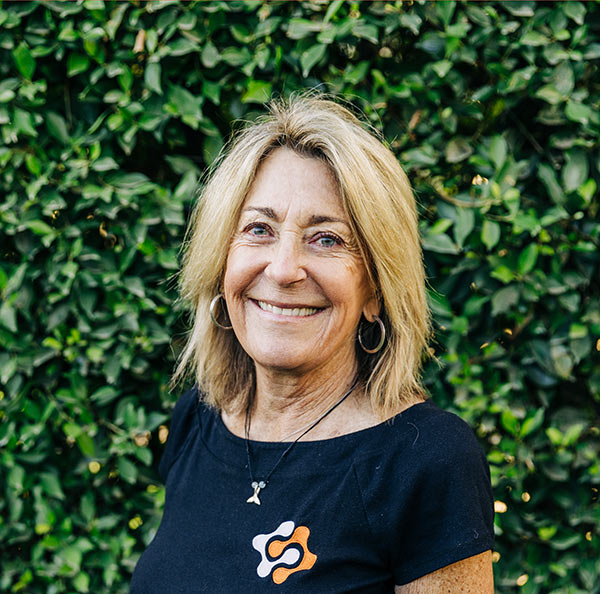Self-Assessment IS essential for learning. Think about how often we self-assess in our daily lives. As I am reading, I am constantly self-assessing and making connections to what I know and what I don’t know. I re-read if I don’t understand, I cross check my understanding with other books and if I really don’t understand, I talk to friends for feedback. This morning I forgot to self-assess and forgot my winter coat on my way to the airport. This is pretty important since I live in San Diego and am working in New York City for the next week. I realized when I got on the plane, that I needed a to create a checklist for packing. After 5 years of living on the road you would think I would have “travel” down. But…. I am always forgetting things: my power-point laser, my headphones, my winter coat, my power cord for my computer, etc. I need the criteria for success to be present so I am successful. I really do need it, because it is costing me a fortune!
Self-Assessment has been shown to raise students’ achievement significantly (Black & William, 1998; Chappuis & Stiggins, 2002; Rolheiser & Ross, 2001; White & Frederiksen, 1998). Confidence and efficacy play a critical role in accurate and meaningful self-assessment and goal setting. They are inextricable attitudes and beliefs of both the teacher and the student. Efficacy in this context is two-fold.
- IT IS the conviction of educators that their actions play a huge role in their students’ academic success.
- It is the student’s belief in herself as a learner.
Rolheiser, Bower, and Stevahn (2000) argue that self-confidence influences “the learning goals that students set and the effort they devote to accomplishing those goals. An upward cycle of learning results when students confidently set learning goals that are moderately challenging yet realistic, and then exert the effort, energy, and resources needed to accomplish those goals” (p. 35). By explicitly teaching students how to set appropriate goals as well as how to assess their work realistically and accurately, teachers can help to promote this upward cycle of learning and self-confidence (Ross, 2006).
What is self-assessment?
Self-assessment is the process of looking at oneself or one’s actions and understanding, in particular, one’s performance ON a learning task in relationship to the success criteria of a standards-based activity or product.
At different points in the learning process, learners may assess, or reflect on, their own processes of learning, the standards-based products they have created, and/or their own thinking. Three strategies are essential to self-assessment:
- Reflection,
- Self-questioning
- Feedback
In order to self-assess the student must be taught to reflect on a completed product, a product in progress or create plans for a future product. Students utilize self-questioning to determine if their product meets the desired criteria. Students seek feedback from a peer or teacher to close the gap between their reality and the desired state. The three strategies are also necessary so students understand that learning is not defined as an accumulation of information, but rather as a thoughtful process with the goal of producing, applying, and creating knowledge.
Self-assessment can be aligned to standards when the success criteria for the product are aligned to the concepts and skills of a standard(s). Self-assessment can also be non-standard-specific, nor grade-level specific. For example, the self-assessment may focus on the strategies to access standard(s), strategies to accomplish a goal and/or may require the student to reflect on what kind of learner he/she is. Sometimes we call these examples “effective learner” qualities.
Why student self-assessment?
Self-Assessment by students is an essential component of the formative process. Self-Assessment supports meaning making before, during and after learning. Feedback about the effort has three elements:
- Recognition of the desired goal
- Evidence about present position
- Some understanding of a way to close the gap between the two.
All three must be understood to some degree by anyone before he or she can take action to improve learning. “If formative assessment is to be productive, pupils should be trained in self-assessment so that they can understand the main purposes of their learning and thereby grasp what they need to do to achieve.” (Black & Wiliam, 1998, p. 143)
What are some easy ways to use self-assessment strategies?
All of the strategies below are most effective when the learning intentions and the success criteria are very clear to the student. In addition, it is more effective if students have been utilizing the success criteria in daily practice. It is also beneficial if the students have co-constructed the success criteria with the teacher.
Rubrics: Rubrics are a valuable tool for self-assessment. We advise co-creating rubrics for all Focus Standards since an effective rubric clearly lists the success criteria. Students are able to use them to monitor and evaluate their progress during an assessment task or activity.
Each student needs to have access to the rubric. Since the rubric has been co-constructed by the class, students should be familiar with the terminology on the rubric. Many teachers have the students color code the rubric. Each criterion should be coded with a different color. During the learning, students can use the rubric to monitor their work to ensure that it demonstrates the required skills, knowledge or understanding. After the work is completed, students can color code their work with the color codes on the rubric. They reflect on their progress and evaluate what they need to improve their performance.
Graphic Organizers: A graphic organizer organizes facts, concepts or ideas in a visual or diagrammatic way so the relationship between the ideas is clear. The value of a graphic organizer in relationship to self-assessment is that it makes the thinking visible for the student, peers and teacher. Graphic organizers work best when paired with success criteria based on the standard(s). For example, empty spaces in the organizer reveal gaps in the student’s knowledge or understanding. These empty spaces indicate what immediately needs to be learned.
Stoplight: Students can use the color from a stoplight as a code for how well they have learned the criteria for success from a standard. During an assessment students can use the color codes to give feedback to the teacher on the criteria from a rubric. Students can code their paper with the stoplight color codes or at the end of the assessment; they can turn their assessment product into 1 of 3 colored bins.
Stoplight Color Codes:
- Green = I can do this
- Yellow = I’m getting there
- Red = I need help

Benefits of self-assessment for students:
- Development of metacognitive skills –students become more skilled at adjusting what they are doing to improve the quality of their work (Cooper, 2006)
- ‘increased responsibility for students’ own learning as a result of more opportunities for self-reflection (Cyboran, 2006)
- positive effects for low achievers – reducing achievement gaps (Black & Wiliam, 1998; Chappuis, & Stiggins, 2002)
- development and refinement of students’ capacity for critical thinking (Cooper, 2006)
- increased mathematics problem-solving ability (Brookhart, Andolina, Zuza, & Furman, 2004)
- improved academic results in narrative writing (Ross, Rolheiser, & Hogaboam-Gray)
- reduction in disruptive behavior (Ross, 2006)
Works Cited:
Black, P., & Wiliam, D. (1998). Inside the black box: Raising standards through classroom assessment. Phi Delta Kappan, 80(2), 139–148.
Brookhart, S. M., Andolina, M., Zuza, M., & Furman, R. (2004). Minute math: An action research study of student self-assessment. Educational Studies in Mathematics, 57(2), 213–227.
Cooper, D. (2006). Collaborating with students in the assessment process. Orbit, 36(2), 20–23.
Chappuis, S., & Stiggins, R. J. (2002 ). Classroom assessment for learning. Educational Leadership, 60(1), 40–43.
Rolheiser, C., & Ross, J.A. (2000). Student self-evaluation – What do we know? Orbit, 30(4), 33–36.
Rolheiser, C. & Ross, J. A. (2001). Student self-evaluation: What research says and what practice shows. In R. D. Small & A. Thomas (Eds.), Plain talk about kids (pp. 43–57). Covington, LA: Center for Development and Learning.
Ross, J. A., Hogaboam-Gray, A., & Rolheiser, C. (2002). Student self evaluation in grade 5–6 mathematics: Effects on problem solving achievement. Educational Assessment, 8(1), 43–58.
White, B. Y., & Frederiksen, J. R. (1998). Inquiry, modeling, and metacognition: Making science accessible to all students. Cognition and Instruction, 16(1), 18–31.
If your focus is on formative assessment, self-assessment must be a focus too. The student must be a part of the formative assessment process for deep learning to occur. Please see our consultants’ favorite books on “The Formative Process” in our website’s bookstore.
Show me the books!

